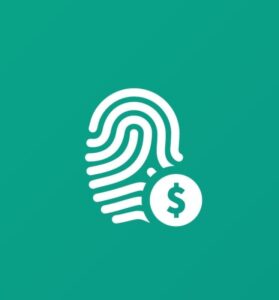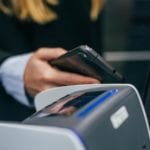The way we pay has changed dramatically in the past 100 years. Patrons used to hand cash and coins to merchants in exchange for goods and services. Today, they’re much more likely to replace physical money with an alternative like a check, a credit card, or even a digital wallet like Google or Apple Pay. The financial industry is always searching for new ways to make transactions more secure, without making a simple swap more complicated than it needs to be.
Biometrics are poised to be the next major evolution in payment technology. Identifiers like faces, fingerprints, and even palms are more difficult to steal than paper money or a PIN, and are in many cases just as easy to use as a standard card.
So what does our biometric future look like? Here are three ways in which biometrics are going to transform the shopping experience in the years ahead.
In the Cards

The most obvious use case for biometric technology is not too much of a departure. People have already been using debit and credit cards for decades, and the next generation of cards will likely feature fingerprint sensors for an added layer of security. The sensors will be integrated directly into the body of the card, and will enable fingerprint authentication whenever the holder wants to complete an in-person transaction.
In that regard, the experience will be similar to one that people are already familiar with. The new cards will simply replace PIN codes with biometric authentication when someone needs to authorize a payment. Biometrics have the advantage because they are more difficult to spoof, and because it takes less time to scan a fingerprint than it does to enter a PIN.
Fingerprint cards can also be completely contactless, making them a cleaner and more convenient option in a post-COVID-19 environment. Such cards have now hit the commercialization phase with card launches in France and Mexico, and it won’t be long before they make their way to the rest of the world.
Mobile Options
Other biometric payment systems will take advantage of the NFC and Bluetooth technology that now comes standard in most current-generation smartphones. People can open a payment app like Google Pay or Apple Pay, and then present their phone at a payment terminal in the same way that they would a card.
As with a card, biometrics will be used to authorize the transaction. The difference is that most smartphones come equipped with more authentication options. Many come with a built-in fingerprint sensor, but people can also use a smartphone’s camera for facial recognition, and other sensors could open the door for more unconventional biometric modalities.
Mobile apps are appealing because many consumers now take their phones with them anywhere they go, just as people once carried wallets. That means that merchants and service providers can trust that most of their customers will have access to some kind of mobile payment technology. Apps offer additional benefits in a remote environment, since they offer the same authentication utility during online payments and money transfers.
The integration of biometric technologies in mobile devices ultimately creates a slew of payment possibilities, and could even help bring cryptocurrencies to the mainstream. Reliable identity verification lets businesses know that their customers are who they say they are, and lets everyone act with more confidence when conducting business.
No Hardware Required
The third use case is potentially the most radical. Payment cards and payment apps rely on some kind of physical device, whether it be a credit card or a cellphone. In that regard, they are not too far removed from cash, which serves as a physical marker that indicates that someone has enough money to complete the transaction.

Biometrics, however, could eliminate the need for any kind of physical intermediary. Instead, someone’s biometric template could be linked directly to their bank account. The stores would then be outfitted with biometric scanners that could be used to identify customers at checkout. Customers, meanwhile, would be able to transfer funds and complete the transaction without ever reaching into their pocket for cash, a phone, or a card.
Those kinds of naked payment systems can take many different forms, insofar as there are many different biometric modalities and many different ways to identify a customer. For example, Amazon is introducing a contactless palm vein authentication system at its Whole Foods stores, while the Moscow metro launched a new Face Pay system in October. Fingerprints and irises are some other popular authentication options, and more and more competitors have started to enter the market in the past few years.
It’s unclear whether or not naked payments will eventually phase out the legacy physical alternatives. As it stands, people are still comfortable with cards, and may not be ready to give up the peace of mind that they get from a card, if only because people know exactly when and where that card is getting used.
Even so, there’s no denying that biometrics opens up an unprecedented world of payment possibilities, especially if people continue to build trust in biometric scanners. The very concept of cash could become obsolete, and it will be fascinating to see which technologies catch on with the broader public.
*
Financial Biometics Month is made possible by our sponsor:
–
November 11, 2021 – by Eric Weiss







Follow Us